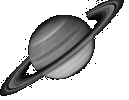
Blackholes Forum Message | |
| Forums: |
Atm ·
Astrophotography ·
Blackholes ·
Blackholes2 ·
CCD ·
Celestron ·
Domes ·
Education
Eyepieces · Meade · Misc. · God and Science · SETI · Software · UFO · XEphem |

 |
|
 |
||||
|
|
||||||
Be the first pioneers to continue the Astronomy Discussions at our new Astronomy meeting place... The Space and Astronomy Agora |
| Re: Gideon: Thanks
Forum List | Follow Ups | Post Message | Back to Thread Topics | In Response To Posted by Gideon Yu/">Gideon Yu on September 22, 1997 15:02:00 UTC |
: : I agree and that the wavelength that the markers are seen one is xray right ? : ??? Matthew- I think youíre asking whether the markers can be in the form of x-rays as opposed to visible light from a supernova. If so, the answer is yes. Often, a black hole (or other super dense dead star like a neutron star) will attract dust and other cosmic particles resulting in what is called an accretion disk around the black hole (picture a flat plate with a black hole at the center). The dust/particles will then tend to rotate around the star, emitting large amounts of x-rays into space. As you can see, itís not the black hole that is being detected, but the effects of its intense gravity. The x-rays, however, should get eaten up by our upper atmosphere, and are usually only detected by equipment in satellites, etc. |
|
| Additional Information |
|---|
| About Astronomy Net | Advertise on Astronomy Net | Contact & Comments | Privacy Policy |
|
Unless otherwise specified, web site content Copyright 1994-2025 John Huggins All Rights Reserved Forum posts are Copyright their authors as specified in the heading above the post. "dbHTML," "AstroGuide," "ASTRONOMY.NET" & "VA.NET" are trademarks of John Huggins |